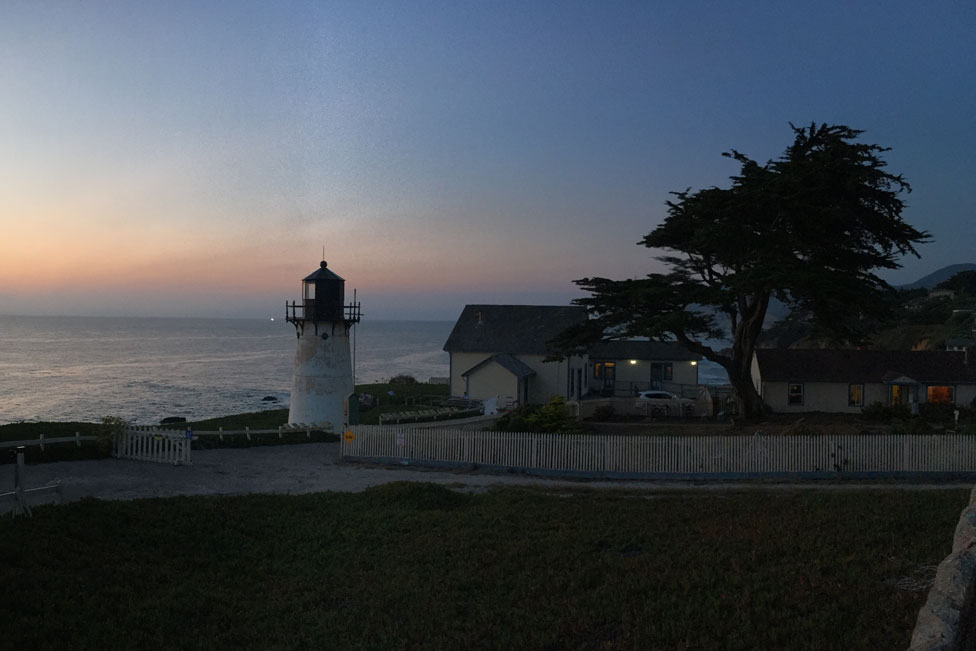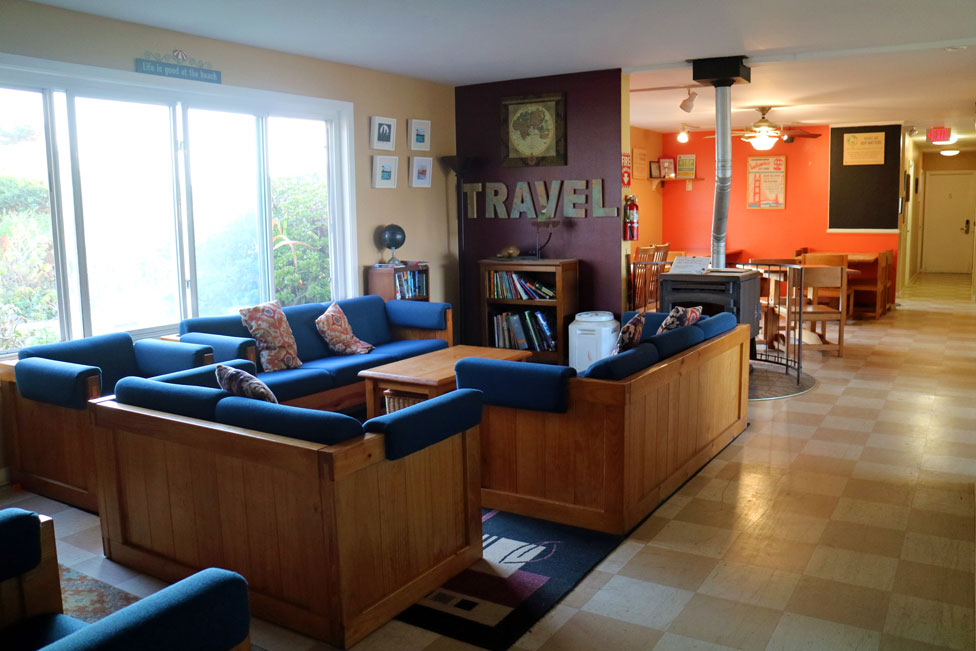Beacons of possibility: Light stations offer accommodations to travelers across the country
The Washington Post
By Erin E. Williams
August 23, 2019
From atop a jagged ocean cliff, I watched as the sunset softened into an afterglow. Dozens of pelicans glided over the water. Salt spray rose from surly waves. Above, a 30-foot lighthouse began flashing, as it has for nearly 140 years. The temperature dropped, so I bade the blinking beacon good night and walked to my dorm room a few feet away.
I was staying at the Hostelling International USA Point Montara Lighthouse Hostel, 20 miles south of San Francisco. The facility, with five private rooms and seven dorms, is one of a few light stations — complexes that include buildings such as keeper’s quarters along with the iconic light-topped towers — that offer guests overnight comfort amid coastal drama and maritime history.
According to the U.S. Lighthouse Society (USLHS), a nonprofit organization that helps preserve these landmarks and their legacies, about 70 are available for lodging in 18 states, Puerto Rico and Canada. Their towers crown ocean cliffs, beaches and inland lakeshores. Just getting to the more remote stations by car, foot or boat is an adventure; Florida’s Loggerhead Light sits on Loggerhead Key in Dry Tortugas National Park.
“Lighthouses are located in some of the country’s most picturesque areas, with beautiful architectural variations,” Scott Price, the U.S. Coast Guard’s chief historian, told me. “They’re engineering marvels and beacons of safety.”
Aspiring keepers can stay overnight in hostels, bed-and-breakfasts and campgrounds. Accommodations are usually in the lighthouse keeper’s cottage or other station buildings. Costs vary widely, from around $15 per night for campsites to more than $400 per night for spacious vacation rentals; I paid $32 at Point Montara. Some facilities allow overnighters to tour the lantern rooms atop towers.
Want to stay a little longer? Try a vacation rental, such as the former keeper’s home at Puget Sound’s Point No Point Lighthouse. Itching to play light keeper? Fee-based nightly or weekly stays include light maintenance tasks at stations such as Washington state’s New Dungeness Lighthouse. Really bitten by the lighthouse bug? Volunteer host keepers receive basic long-term accommodations in exchange for staffing museums, guiding tours or assisting with restoration; Maine’s Seguin Point Lighthouse offers a summertime role.
USLHS Executive Director Jeff Gales has advice for visitors: “Don’t try to do too much — just enjoy the experience of being at a light station. Every hour, the water, sky and wildlife change. Watch the world go by as a keeper would’ve done.”
Gales says overnight stays are a way to sustain light stations’ living history; accommodation fees often help fund historic preservation and maintenance. Another benefit? “People looking for unique accommodations find lighthouses, and after staying at a station, they become inspired to get involved with preservation,” he added.
“Lighthouses are physical representations of our rich maritime history,” Price said. “They’re a gateway to study and appreciate that history and get a sense of the importance of our seafaring cultures.”
Seafarers have relied on lighthouses for millennia. The first lighthouse in what would become the United States was the privately owned Boston Light, which began guiding ships into Boston Harbor in 1716. According to the Coast Guard, approximately 1,500 lighthouses were built in America over the years. The last major lighthouse, Charleston Light on Sullivan’s Island, S.C., was built in 1962. Keepers cared for the flame or lighting equipment and watched for vessels in trouble.
Navigational technology advanced, so the Coast Guard automated lighthouses by the early 1980s and turned them over to state and federal agencies, historical societies and other nonprofit groups. Over the years, some have made their way into private ownership. The Coast Guard still maintains 473 major lights whose beacons glow more than 10 miles.
About 630 no-longer-manned lighthouses remain (the National Park Service, which preserves many of these, provides an online inventory), attracting people interested in maritime traditions, marine and lake ecosystems, wildlife, pirates, ghost hunting and lighthouse crown jewels: optical glass light lenses.
“People are also drawn to them because they celebrate human traits that we all endeavor to achieve, like bravery and selflessness,” Gales said. “The keepers were altruistic people who saved lives.”
The USLHS has a list of lighthouses with accommodations by state. In California, visitors can stay at five lighthouses, including a tiny island B&B in San Francisco Bay and a pet-friendly vacation rental in a former lightkeeper’s house. Lighthouse-rich Michigan has 20 locations that offer a variety of lodging opportunities, from no-frills island camping on Lake Michigan to a Lake Superior vacation rental with a library, deck and sunroom. The list includes only one lighthouse-related place to stay in Alaska — on a barge next to a lighthouse on Prince William Sound — though another location may be added soon.
Point Montara is one of 40-something lighthouses that adorn California’s coast. At least 1,500 shipwrecks along that stretch of shoreline, including one on Colorado Reef off Point Montara, are a ghostly testament to the once-crucial need for the beacon.
The Point Montara lighthouse is short in stature, but its legacy is supersize. Built in 1881, it is the only tower that has guided seafarers on two oceans. It kept watch in Wellfleet, Mass., until 1922 and operated under one of the country’s first female keepers. From there, it journeyed to San Francisco (nobody really knows how, although it may have enjoyed its own voyage by ship), then was installed at Point Montara in 1928 — an upgrade for the fog signal station that had stood since 1875. During World War II, the property housed the K-9 Corps and Navy sailors who trained by firing at targets that courageous female pilots trailed behind their planes.
The Coast Guard automated the light in 1970 and stopped staffing the buildings. American Youth Hostels, the California Department of Parks and Recreation, California Coastal Conservancy and others restored and converted the station into a hostel that opened in 1980.
Although the beacon used to warn sailors away, it now attracts people, said Christopher Bauman, the hostel’s general manager. “It’s a whimsical, amazing spot with fascinating views and things to explore on the property and along the coast. It pulls you out of the urban world and into nature.”
The hostel hosts about 11,000 overnighters and 12,000 day-trippers every year, from casual travelers to those on epic odysseys. It’s a popular stop for Highway 1 cyclists, including some biking from Argentina to Alaska.
“It’s the ultimate hostel lighthouse because two of our tenets are sustainability and travel,” Bauman added. “The lighthouse has been recycled and has journeyed thousands of miles, so it perfectly embodies what we’re all about.”
The hostel’s history and stark beauty have drawn me three times. On my first visit, I stayed in a private room in a 1902 fog signal building. On my next trips, I slept in a dorm inside a converted 1960s duplex that once housed Coast Guard members.
On my most recent visit, I arrived midafternoon and selected my bed in a women’s dorm from among six wooden bunks with blue polka-dot comforters (by nighttime, every bunk would be occupied). I stashed my luggage in a locker and bundled up for a foray into the November chill.
At one of the two kitchens’ communal tables, a couple prepared a late lunch. A small group relaxed on one of the common area’s navy couches, and a Briton readied his panniers for a pedal down the coastal highway.
Passing a fishing buoy-trimmed fence, I set off to roam the bluffs. I followed succulent-lined trails and descended to a beachy cove where the wind flung mist against my face as I watched gray whales spouting on their journey south.
As the sun dropped, hostel guests spilled onto the cliff top benches and picnic tables. I joined a couple of backpackers for some conversational camaraderie under the white tower’s salt-blasted patina, but we fell silent as we readied ourselves to contemplate the sunset from one of the best perches on the West Coast.
Original at The Washington Post.
PDF here: 2019-08-25 Lightstations.




